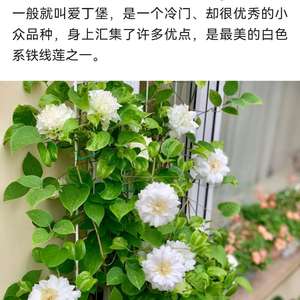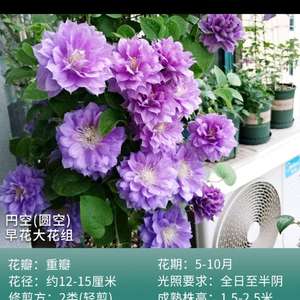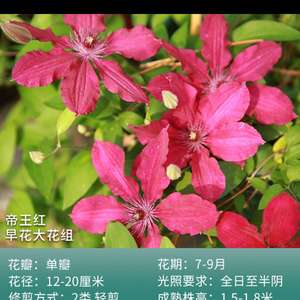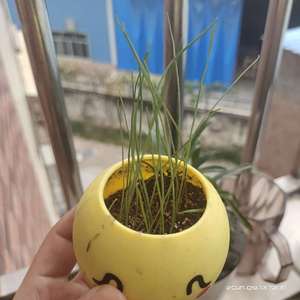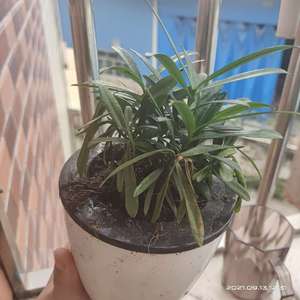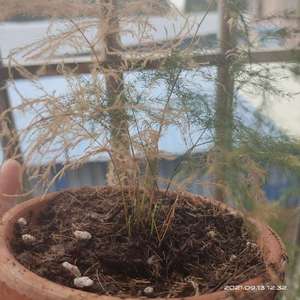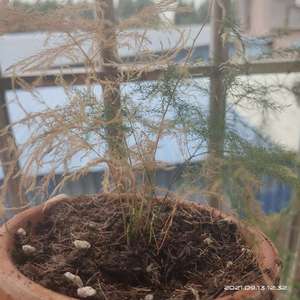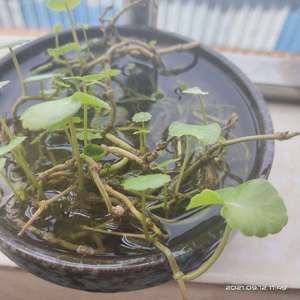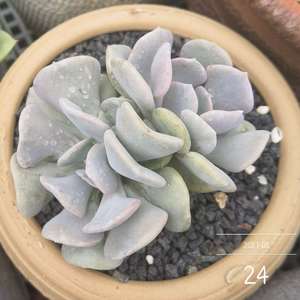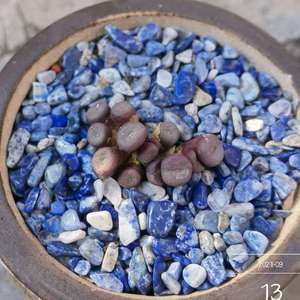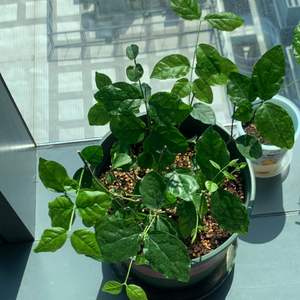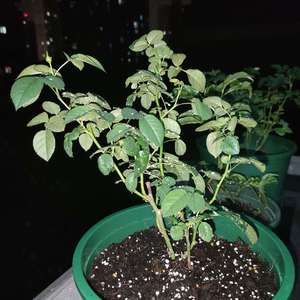文章
Miss Chen
2021年10月11日

Belladonna (Atropa bella-donna) is extremely toxic to toxic to humans,1 cats, dogs, and horses.2 It’s a plant that by no means should you ever plant it in your yard. Belladonna escaped its native areas in Eurasia and has naturalized in other parts of the world. It can be anywhere, almost. It is important to be able to identify belladonna and remove it promptly before it can cause any harm.
The botanical name of the genus already gives away how deadly the plant is. Atropa was named in the mid-1700s after Atropos, the Greek goddess who, as one of the three goddesses of fate and destiny, holds the shears to cut the thread of life. The common name and the species name, belladonna, comes from the Italian word for beautiful woman, “bella donna”. Ladies at the Venetian court used eye drops made of belladonna to dilate their pupils, viewed as a sign of special beauty at the time.
FEATURED VIDEO
How to Remove Coffee Stains From Carpet
Which Parts of Belladonna Are Toxic?
All parts of belladonna—leaves, flowers, fruits, and roots—are highly toxic.3
Belladonna is also highly toxic to dogs, cats, horses, and other domesticated animals. It is not toxic to birds and wildlife.
When honeybees feed on belladonna, the honey they produce can contain significant amounts of atropine, which also makes the honey toxic3—another compelling reason to remove belladonna promptly wherever it pops up.

How to Identify Belladonna
Belladonna is a tall, bushy, upright, perennial of the nightshade family. It grows three to four feet high and wide. As a perennial, it comes back every year.
The dark green leaves are oval and unevenly sized, ranging from three to ten inches in length. The leaves on the lower part of the plant are solitary, on the upper part of the plant, they grow in pairs.
Belladonna blooms for an extended period of time, from June through early September. The flowers are dull purple or lavender with a green tinge and distinctly bell-shaped. The flowers are located in the leaf axils, the angle between the leaf and the upper part of the stem. They are distinctly bell-shaped and have a mild floral scent.
The fruit, which ripen between late August and September, are black and shiny like a cherry. The berries are not evenly sized and can reach about three quarters of an inch in size. Once they ripen, the berries dry up quickly.
Due to their slight resemblance with wild edible berries, such as blueberries and blackberries, the purplish-black, sweet-tasting fruit of belladonna pose a particular risk of being ingested.
Where Does Belladonna Grow?
Belladonna is native to England through central and southern Europe, North Africa to Iran. In the United States, belladonna has been found in several states, including New York, Michigan, California, Oregon, and Washington. It often grows in wasteland and areas with disturbed soil such as dumps and quarries, and along roadsides.
How Does Belladonna Spread?
Belladonna spreads rapidly like a weed. The plant dies back during the winter and regrows in the spring from its thick, fleshy roots.
Birds that eat the seeds without any ill effects spread the plant to other locations in their droppings.
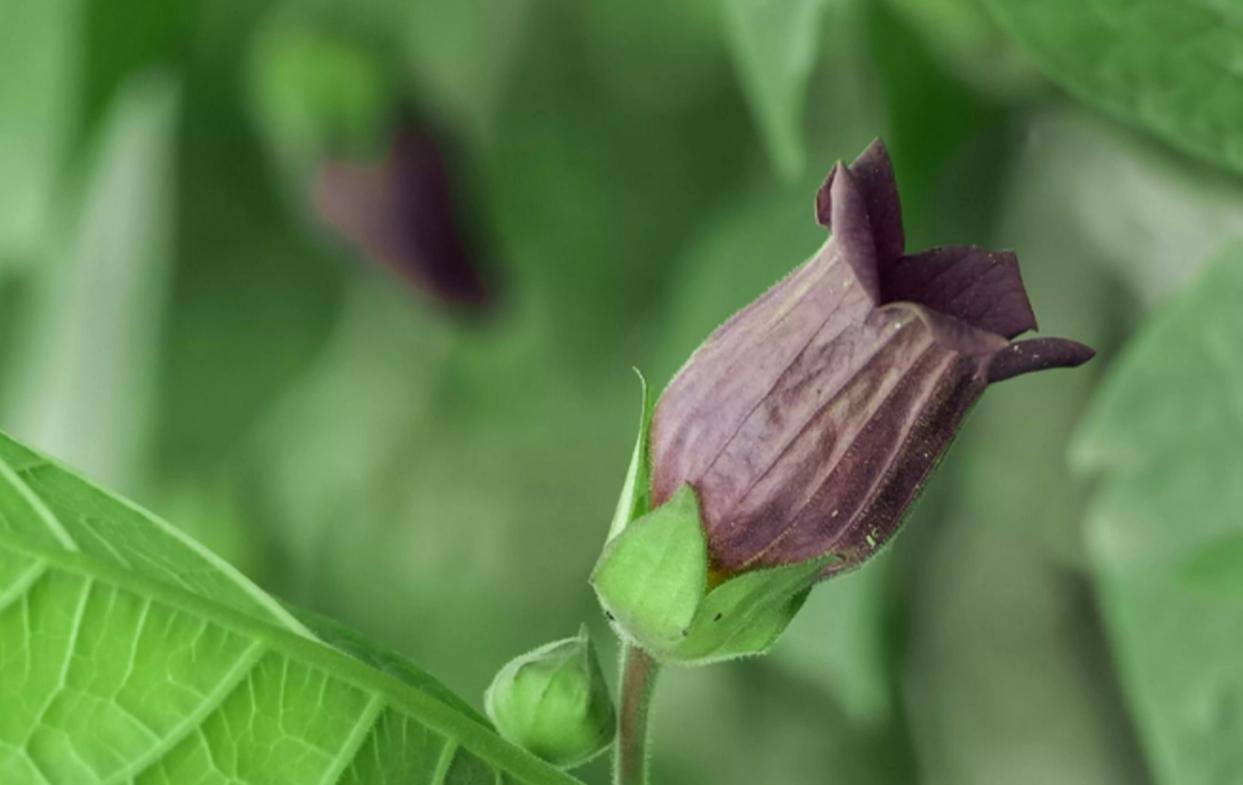
How to Get Rid of Belladonna from Your Yard
If you have positively identified belladonna in your yard, take all the necessary precautions to avoid skin contact. Wear long sleeves, long pants, boots, and gloves. If the plant is tall and there is the slightest risk that your face can get in contact with the plant, also wear goggles or a full-face respirator.
Dig out the plant with all its roots. Be thorough because belladonna regrows from any roots left in the soil. Safely dispose of the entire plant including its roots in the trash. Don’t forget to disinfect the tools you have been using for removing the plant—shovel, pruners etc. with bleach water (1 cup bleach per 1 gallon water). When cleaning the tools, wear waterproof gloves. Wash your clothes immediately and separately from other clothing.
If belladonna starts to regrow from residual roots, the most efficient chemical to use is a non-selective herbicide such as glyphosate. Make sure to apply the herbicide when the shoots are still very small to minimize the use of herbicide and hit the plant before it can spread again.
The botanical name of the genus already gives away how deadly the plant is. Atropa was named in the mid-1700s after Atropos, the Greek goddess who, as one of the three goddesses of fate and destiny, holds the shears to cut the thread of life. The common name and the species name, belladonna, comes from the Italian word for beautiful woman, “bella donna”. Ladies at the Venetian court used eye drops made of belladonna to dilate their pupils, viewed as a sign of special beauty at the time.
FEATURED VIDEO
How to Remove Coffee Stains From Carpet
Which Parts of Belladonna Are Toxic?
All parts of belladonna—leaves, flowers, fruits, and roots—are highly toxic.3
Belladonna is also highly toxic to dogs, cats, horses, and other domesticated animals. It is not toxic to birds and wildlife.
When honeybees feed on belladonna, the honey they produce can contain significant amounts of atropine, which also makes the honey toxic3—another compelling reason to remove belladonna promptly wherever it pops up.

How to Identify Belladonna
Belladonna is a tall, bushy, upright, perennial of the nightshade family. It grows three to four feet high and wide. As a perennial, it comes back every year.
The dark green leaves are oval and unevenly sized, ranging from three to ten inches in length. The leaves on the lower part of the plant are solitary, on the upper part of the plant, they grow in pairs.
Belladonna blooms for an extended period of time, from June through early September. The flowers are dull purple or lavender with a green tinge and distinctly bell-shaped. The flowers are located in the leaf axils, the angle between the leaf and the upper part of the stem. They are distinctly bell-shaped and have a mild floral scent.
The fruit, which ripen between late August and September, are black and shiny like a cherry. The berries are not evenly sized and can reach about three quarters of an inch in size. Once they ripen, the berries dry up quickly.
Due to their slight resemblance with wild edible berries, such as blueberries and blackberries, the purplish-black, sweet-tasting fruit of belladonna pose a particular risk of being ingested.
Where Does Belladonna Grow?
Belladonna is native to England through central and southern Europe, North Africa to Iran. In the United States, belladonna has been found in several states, including New York, Michigan, California, Oregon, and Washington. It often grows in wasteland and areas with disturbed soil such as dumps and quarries, and along roadsides.
How Does Belladonna Spread?
Belladonna spreads rapidly like a weed. The plant dies back during the winter and regrows in the spring from its thick, fleshy roots.
Birds that eat the seeds without any ill effects spread the plant to other locations in their droppings.

How to Get Rid of Belladonna from Your Yard
If you have positively identified belladonna in your yard, take all the necessary precautions to avoid skin contact. Wear long sleeves, long pants, boots, and gloves. If the plant is tall and there is the slightest risk that your face can get in contact with the plant, also wear goggles or a full-face respirator.
Dig out the plant with all its roots. Be thorough because belladonna regrows from any roots left in the soil. Safely dispose of the entire plant including its roots in the trash. Don’t forget to disinfect the tools you have been using for removing the plant—shovel, pruners etc. with bleach water (1 cup bleach per 1 gallon water). When cleaning the tools, wear waterproof gloves. Wash your clothes immediately and separately from other clothing.
If belladonna starts to regrow from residual roots, the most efficient chemical to use is a non-selective herbicide such as glyphosate. Make sure to apply the herbicide when the shoots are still very small to minimize the use of herbicide and hit the plant before it can spread again.
0
0
文章
Miss Chen
2021年09月21日

Balloon flowers (Platycodon grandiflorus) are clump-forming perennials and members of the easy-to-grow bellflower family of plants although the blooms do not resemble bells. Instead, puffy, balloon-like buds swell up to produce the 2- to 3-inch star-shaped flowers. This easy-grower blooms all summer long with intense blue-violet flowers, but there are also cultivars with white and pink blooms. Balloon flowers are generally planted in the spring after the danger of frost has passed, growing quickly to bloom in the first year.
Common Name Balloon flower, Chinese bellflower, Japanese bellflower
Botanical Name Platycodon grandiflorus
Family Campanulaceae (bellflower)
Plant Type Herbaceous perennial
Mature Size 1– 2 1/2 ft. tall, 1–1 1/2 ft. wide
Sun Exposure Full sun to part shade
Soil Type Rich, loamy, medium moisture, well-draining
Soil pH 5.5–7.5 (acidic to slightly alkaline)
Bloom Time Summer
Flower Color Blue-violet, white, pink
Hardiness Zones 3–8 (USDA)
Native Area China, Korea, Japan, Russia
Balloon Flower Care
Balloon flowers make excellent plants for border gardens or rock gardens and the blooms attract pollinators such as bees and butterflies thanks to their wide-open petals. These perennials will self-sow their seed, though they aren't aggressive spreaders. Overall, balloon flowers are fairly low-maintenance plants and are quite pest- and disease-resistant outside of root rot in areas with large amounts of rainfall.1
The taller varieties of balloon flowers can become a bit floppy. You can stake them or plant them in clumps to let them support one another. Start with nursery plants or grow your balloon flowers from seed.
Light
You will get the most flowers if you plant balloon flowers in full sun (at least six hours of sunlight on most days). However, they will be fine in part shade and might actually prefer some shade from where the afternoon sun is especially hot.
Soil
Balloon flowers prefer organically rich, loamy soil that has good drainage. They don’t grow well in dense soil, such as clay. They like a soil pH in the 5.5 to 7.5 range.
Water
Keep the soil of young plants consistently moist but not soggy. Once established, balloon flowers like a moderate amount of moisture in the soil, but they can tolerate short periods of drought. They won’t need a lot of supplemental watering unless you have a long period without rainfall that causes the soil to dry out.
Temperature and Humidity
Balloon flowers are hardy and do well in USDA growing zones 3 to 8. Their ideal temperature range is between 60 and 80 degrees Fahrenheit, but they can withstand higher temperatures if they have some shade in the afternoon. Frost can kill young plants and will cause established plants to die back into the ground in the fall. Balloon flowers tolerate both humid and dry air conditions, provided they have the right amount of soil moisture.
Fertilizer
Balloon flowers typically don't need supplemental feeding if you have rich soil. But a layer of compost in the fall can help them replenish the energy they expend blooming during the growing season. If you have poor soil, use an all-purpose, slow-release fertilizer in early spring.
Types of Balloon Flowers
There are several popular varieties of balloon flowers, including:
Platycodon grandiflorus Astra series: This type grows double flowers with 10 petals in blue, pink, or white. They're an ideal choice to start from seeds.
P. grandiflorus Fuji series: This is the most commonly sold variety, as well as the tallest, with 30-inch stems and flowers in blue, pink, or white.
P. grandiflorus 'Komachi': The purple-blue flowers in this variety stay in their puffy pillow stage even after blooming.
P. 'Sentimental Blue': This dwarf variety grows about 6 inches tall with lots of 1- to 2-inch purple flowers.
Pruning
Pruning generally isn't necessary with balloon flowers, though you can do so for appearance. To achieve stockier plants, you can cut back tall stems by about half in the late spring. This can help to prevent the plants from flopping over. Also, deadheading your plants (removing spent blooms) will keep them looking good and repeatedly blooming. Don't remove the whole stem, just the faded flowers. The remaining buds on the stem will continue to open.
Propagating Balloon Flowers
Propagating by division is generally not recommended for balloon flowers because the deep taproots do not like being disturbed. Instead, you can propagate by taking stem cuttings.
Use sterile, sharp pruners to trim a 4-inch length of stem, and remove the lower foliage to expose the bare stem.
Use a rooting hormone on the bare stem if you wish, and then pot it in moist soil.
Keep the soil moist (but not soggy) as you wait for roots to take hold.
Once you see leaf growth and feel resistance when you give the cutting a gentle tug, you’ll know roots have grown. Then, the plant is ready to be transplanted into the garden.
How to Grow Balloon Flowers From Seed
Start seeds indoors in the early spring about six to eight weeks before your area's projected last frost date, using seed starter mix or ordinary potting soil. Barely cover the seeds with 1/16 inch of soil. Place the container in a warm location until the seeds germinate. After the weather has warmed, you can transplant the seedlings outdoors. If you plant seeds directly in your garden, do so after your last frost date, but know they likely won't flower in their first year.
Common Pests and Plant Diseases
Balloon flowers generally attract slugs and snails, as do many other outdoor bloomers, which can be coaxed off the plants with bait. However, the plant may become afflicted with crown rot, root rot, botrytis gray mold, powdery mildew, or fungal leaf spot. Crown and root rot may cause plants to die over the winter. Leaves presenting powdery spots, mottling, or blotching can usually be treated with a fungicide. Quickly discard plants with gray mold so it doesn't spread, then use a preventative fungicide on remaining plants.
Common Name Balloon flower, Chinese bellflower, Japanese bellflower
Botanical Name Platycodon grandiflorus
Family Campanulaceae (bellflower)
Plant Type Herbaceous perennial
Mature Size 1– 2 1/2 ft. tall, 1–1 1/2 ft. wide
Sun Exposure Full sun to part shade
Soil Type Rich, loamy, medium moisture, well-draining
Soil pH 5.5–7.5 (acidic to slightly alkaline)
Bloom Time Summer
Flower Color Blue-violet, white, pink
Hardiness Zones 3–8 (USDA)
Native Area China, Korea, Japan, Russia
Balloon Flower Care
Balloon flowers make excellent plants for border gardens or rock gardens and the blooms attract pollinators such as bees and butterflies thanks to their wide-open petals. These perennials will self-sow their seed, though they aren't aggressive spreaders. Overall, balloon flowers are fairly low-maintenance plants and are quite pest- and disease-resistant outside of root rot in areas with large amounts of rainfall.1
The taller varieties of balloon flowers can become a bit floppy. You can stake them or plant them in clumps to let them support one another. Start with nursery plants or grow your balloon flowers from seed.
Light
You will get the most flowers if you plant balloon flowers in full sun (at least six hours of sunlight on most days). However, they will be fine in part shade and might actually prefer some shade from where the afternoon sun is especially hot.
Soil
Balloon flowers prefer organically rich, loamy soil that has good drainage. They don’t grow well in dense soil, such as clay. They like a soil pH in the 5.5 to 7.5 range.
Water
Keep the soil of young plants consistently moist but not soggy. Once established, balloon flowers like a moderate amount of moisture in the soil, but they can tolerate short periods of drought. They won’t need a lot of supplemental watering unless you have a long period without rainfall that causes the soil to dry out.
Temperature and Humidity
Balloon flowers are hardy and do well in USDA growing zones 3 to 8. Their ideal temperature range is between 60 and 80 degrees Fahrenheit, but they can withstand higher temperatures if they have some shade in the afternoon. Frost can kill young plants and will cause established plants to die back into the ground in the fall. Balloon flowers tolerate both humid and dry air conditions, provided they have the right amount of soil moisture.
Fertilizer
Balloon flowers typically don't need supplemental feeding if you have rich soil. But a layer of compost in the fall can help them replenish the energy they expend blooming during the growing season. If you have poor soil, use an all-purpose, slow-release fertilizer in early spring.
Types of Balloon Flowers
There are several popular varieties of balloon flowers, including:
Platycodon grandiflorus Astra series: This type grows double flowers with 10 petals in blue, pink, or white. They're an ideal choice to start from seeds.
P. grandiflorus Fuji series: This is the most commonly sold variety, as well as the tallest, with 30-inch stems and flowers in blue, pink, or white.
P. grandiflorus 'Komachi': The purple-blue flowers in this variety stay in their puffy pillow stage even after blooming.
P. 'Sentimental Blue': This dwarf variety grows about 6 inches tall with lots of 1- to 2-inch purple flowers.
Pruning
Pruning generally isn't necessary with balloon flowers, though you can do so for appearance. To achieve stockier plants, you can cut back tall stems by about half in the late spring. This can help to prevent the plants from flopping over. Also, deadheading your plants (removing spent blooms) will keep them looking good and repeatedly blooming. Don't remove the whole stem, just the faded flowers. The remaining buds on the stem will continue to open.
Propagating Balloon Flowers
Propagating by division is generally not recommended for balloon flowers because the deep taproots do not like being disturbed. Instead, you can propagate by taking stem cuttings.
Use sterile, sharp pruners to trim a 4-inch length of stem, and remove the lower foliage to expose the bare stem.
Use a rooting hormone on the bare stem if you wish, and then pot it in moist soil.
Keep the soil moist (but not soggy) as you wait for roots to take hold.
Once you see leaf growth and feel resistance when you give the cutting a gentle tug, you’ll know roots have grown. Then, the plant is ready to be transplanted into the garden.
How to Grow Balloon Flowers From Seed
Start seeds indoors in the early spring about six to eight weeks before your area's projected last frost date, using seed starter mix or ordinary potting soil. Barely cover the seeds with 1/16 inch of soil. Place the container in a warm location until the seeds germinate. After the weather has warmed, you can transplant the seedlings outdoors. If you plant seeds directly in your garden, do so after your last frost date, but know they likely won't flower in their first year.
Common Pests and Plant Diseases
Balloon flowers generally attract slugs and snails, as do many other outdoor bloomers, which can be coaxed off the plants with bait. However, the plant may become afflicted with crown rot, root rot, botrytis gray mold, powdery mildew, or fungal leaf spot. Crown and root rot may cause plants to die over the winter. Leaves presenting powdery spots, mottling, or blotching can usually be treated with a fungicide. Quickly discard plants with gray mold so it doesn't spread, then use a preventative fungicide on remaining plants.
0
0



